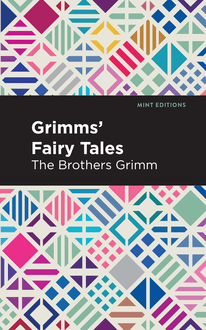-
 Univers
Univers
-
 Ebooks
Ebooks
-
 Livres audio
Livres audio
-
 Presse
Presse
-
 Podcasts
Podcasts
-
 BD
BD
-
 Documents
Documents
-
- Cours
- Révisions
- Ressources pédagogiques
- Sciences de l’éducation
- Manuels scolaires
- Langues
- Travaux de classe
- Annales de BEP
- Etudes supérieures
- Maternelle et primaire
- Fiches de lecture
- Orientation scolaire
- Méthodologie
- Corrigés de devoir
- Annales d’examens et concours
- Annales du bac
- Annales du brevet
- Rapports de stage
La lecture à portée de main
Vous pourrez modifier la taille du texte de cet ouvrage
Découvre YouScribe en t'inscrivant gratuitement
Je m'inscrisDécouvre YouScribe en t'inscrivant gratuitement
Je m'inscrisEn savoir plus
Vous pourrez modifier la taille du texte de cet ouvrage
En savoir plus

Description
Originally published in 1897, The Pink Fairy Book is a dynamic collection of world-renown stories that are deeply rooted in Japanese, Italian and Scandinavian culture. These rich and compelling stories are staples within the children’s genre. The Pink Fairy Book is a continuation of Andrew Lang’s popular fairy tale book series. This edition includes more international fare such as "The Slaying of the Tanuki," "I Know What I Have Learned," "The Jackal, the Dove, and the Panther" and "How the Hermit Helped to Win the King's Daughter." With more than 40 stories to choose from, The Pink Fairy Book offers a delightful assortment of classic children’s fare. A rich collection of morality tales for readers of all ages. These narratives are populated by evil witches, spiteful kings and selfish trolls forced to confront the error of their ways. Andrew Lang’s The Pink Fairy Book delivers memorable stories with powerful messages. With an eye-catching new cover, and professionally typeset manuscript, this edition of The Pink Fairy Book is both modern and readable.
Sujets
Informations
| Publié par | Mint Editions |
| Date de parution | 08 juin 2021 |
| Nombre de lectures | 0 |
| EAN13 | 9781513286648 |
| Langue | English |
| Poids de l'ouvrage | 1 Mo |
Informations légales : prix de location à la page 0,0500€. Cette information est donnée uniquement à titre indicatif conformément à la législation en vigueur.
Extrait
The Pink Fairy Book
Andrew Lang
The Pink Fairy Book was first published in 1897.
This edition published by Mint Editions 2021.
ISBN 9781513281629 | E-ISBN 9781513286648
Published by Mint Editions®
minteditionbooks.com
Publishing Director: Jennifer Newens
Design & Production: Rachel Lopez Metzger
Project Manager: Micaela Clark
Typesetting: Westchester Publishing Services
C ONTENTS P REFACE T HE C AT ’ S E LOPEMENT H OW THE D RAGON WAS T RICKED T HE G OBLIN AND THE G ROCER T HE H OUSE IN THE W OOD U RASCHIMATARO AND THE T URTLE T HE S LAYING OF THE T ANUKI T HE F LYING T RUNK T HE S NOW - MAN T HE S HIRT - COLLAR T HE P RINCESS IN THE C HEST T HE T HREE B ROTHERS T HE S NOW - QUEEN T HE F IR - TREE H ANS , THE M ERMAID ’ S S ON P ETER B ULL T HE B IRD “G RIP ” S NOWFLAKE I KNOW WHAT I HAVE LEARNED T HE C UNNING S HOEMAKER T HE K ING WHO WOULD HAVE A B EAUTIFUL W IFE C ATHERINE AND HER D ESTINY H OW THE H ERMIT HELPED TO WIN THE K ING ’ S D AUGHTER T HE W ATER OF L IFE T HE W OUNDED L ION T HE M AN WITHOUT A H EART T HE T WO B ROTHERS M ASTER AND P UPIL T HE G OLDEN L ION T HE S PRIG OF R OSEMARY T HE W HITE D OVE T HE T ROLL ’ S D AUGHTER E SBEN AND THE W ITCH P RINCESS M INON -M INETTE M AIDEN B RIGHT - EYE T HE M ERRY W IVES K ING L INDORM T HE J ACKAL , THE D OVE , AND THE P ANTHER T HE L ITTLE H ARE T HE S PARROW WITH THE S LIT T ONGUE T HE S TORY OF C ICCU D ON G IOVANNI DE LA F ORTUNA
P REFACE
All people in the world tell nursery tales to their children. The Japanese tell them, the Chinese, the Red Indians by their camp fires, the Eskimo in their dark dirty winter huts. The Kaffirs of South Africa tell them, and the modern Greeks, just as the old Egyptians did, when Moses had not been many years rescued out of the bulrushes. The Germans, French, Spanish, Italians, Danes, Highlanders tell them also, and the stories are apt to be like each other everywhere. A child who has read the Blue and Red and Yellow Fairy Books will find some old friends with new faces in the Pink Fairy Book, if he examines and compares. But the Japanese tales will probably be new to the young student; the Tanuki is a creature whose acquaintance he may not have made before. He may remark that Andersen wants to “point a moral,” as well as to “adorn a tale;” that he is trying to make fun of the follies of mankind, as they exist in civilised countries. The Danish story of “The Princess in the Chest” need not be read to a very nervous child, as it rather borders on a ghost story. It has been altered, and is really much more horrid in the language of the Danes, who, as history tells us, were not a nervous or timid people. I am quite sure that this story is not true. The other Danish and Swedish stories are not alarming. They are translated by Mr. W. A. Craigie. Those from the Sicilian (through the German) are translated, like the African tales (through the French) and the Catalan tales, and the Japanese stories (the latter through the German), and an old French story, by Mrs. Lang. Miss Alma Alleyne did the stories from Andersen, out of the German. Mr. Ford, as usual, has drawn the monsters and mermaids, the princes and giants, and the beautiful princesses, who, the Editor thinks, are, if possible, prettier than ever. Here, then, are fancies brought from all quarters: we see that black, white, and yellow peoples are fond of just the same kinds of adventures. Courage, youth, beauty, kindness, have many trials, but they always win the battle; while witches, giants, unfriendly cruel people, are on the losing hand. So it ought to be, and so, on the whole, it is and will be; and that is all the moral of fairy tales. We cannot all be young, alas! and pretty, and strong; but nothing prevents us from being kind, and no kind man, woman, or beast or bird, ever comes to anything but good in these oldest fables of the world. So far all the tales are true, and no further.
T HE C AT ’ S E LOPEMENT 1
Once upon a time there lived a cat of marvellous beauty, with a skin as soft and shining as silk, and wise green eyes, that could see even in the dark. His name was Gon, and he belonged to a music teacher, who was so fond and proud of him that he would not have parted with him for anything in the world.
Now not far from the music master’s house there dwelt a lady who possessed a most lovely little pussy cat called Koma. She was such a little dear altogether, and blinked her eyes so daintily, and ate her supper so tidily, and when she had finished she licked her pink nose so delicately with her little tongue, that her mistress was never tired of saying, “Koma, Koma, what should I do without you?”
Well, it happened one day that these two, when out for an evening stroll, met under a cherry tree, and in one moment fell madly in love with each other. Gon had long felt that it was time for him to find a wife, for all the ladies in the neighbourhood paid him so much attention that it made him quite shy; but he was not easy to please, and did not care about any of them. Now, before he had time to think, Cupid had entangled him in his net, and he was filled with love towards Koma. She fully returned his passion, but, like a woman, she saw the difficulties in the way, and consulted sadly with Gon as to the means of overcoming them. Gon entreated his master to set matters right by buying Koma, but her mistress would not part from her. Then the music master was asked to sell Gon to the lady, but he declined to listen to any such suggestion, so everything remained as before.
At length the love of the couple grew to such a pitch that they determined to please themselves, and to seek their fortunes together. So one moonlight night they stole away, and ventured out into an unknown world. All day long they marched bravely on through the sunshine, till they had left their homes far behind them, and towards evening they found themselves in a large park. The wanderers by this time were very hot and tired, and the grass looked very soft and inviting, and the trees cast cool deep shadows, when suddenly an ogre appeared in this Paradise, in the shape of a big, big dog! He came springing towards them showing all his teeth, and Koma shrieked, and rushed up a cherry tree. Gon, however, stood his ground boldly, and prepared to give battle, for he felt that Koma’s eyes were upon him, and that he must not run away. But, alas! his courage would have availed him nothing had his enemy once touched him, for he was large and powerful, and very fierce. From her perch in the tree Koma saw it all, and screamed with all her might, hoping that some one would hear, and come to help. Luckily a servant of the princess to whom the park belonged was walking by, and he drove off the dog, and picking up the trembling Gon in his arms, carried him to his mistress.
So poor little Koma was left alone, while Gon was borne away full of trouble, not in the least knowing what to do. Even the attention paid him by the princess, who was delighted with his beauty and pretty ways, did not console him, but there was no use in fighting against fate, and he could only wait and see what would turn up.
The princess, Gon’s new mistress, was so good and kind that everybody loved her, and she would have led a happy life, had it not been for a serpent who had fallen in love with her, and was constantly annoying her by his presence. Her servants had orders to drive him away as often as he appeared; but as they were careless, and the serpent very sly, it sometimes happened that he was able to slip past them, and to frighten the princess by appearing before her. One day she was seated in her room, playing on her favourite musical instrument, when she felt something gliding up her sash, and saw her enemy making his way to kiss her cheek. She shrieked and threw herself backwards, and Gon, who had been curled up on a stool at her feet, understood her terror, and with one bound seized the snake by his neck. He gave him one bite and one shake, and flung him on the ground, where he lay, never to worry the princess any more. Then she took Gon in her arms, and praised and caressed him, and saw that he had the nicest bits to eat, and the softest mats to lie on; and he would have had nothing in the world to wish for if only he could have seen Koma again.
Time passed on, and one morning Gon lay before the house door, basking in the sun. He looked lazily at the world stretched out before him, and saw in the distance a big ruffian of a cat teasing and ill-treating quite a little one. He jumped up, full of rage, and chased away the big cat, and then he turned to comfort the little one, when his heart nearly burst with joy to find that it was Koma. At first Koma did not know him again, he had grown so large and stately; but when it dawned upon her who it was, her happiness knew no bounds. And they rubbed their heads and their noses again and again, while their purring might have been heard a mile off.
Paw in paw they appeared before the princess, and told her the story of their life and its sorrows. The princess wept for sympathy, and promised that they should never more be parted, but should live with her to the end of their days. By-and-bye the princess herself got married, and brought a prince to dwell in the palace in the park. And she told him all about her two cats, and how brave Gon had been, and how he had delivered her from her enemy the serpent.
And when the prince heard, he swore they should never leave them, but should go with the princess wherever she went. So it all fell out as the princess wished; and Gon and Koma had many children, and so had the princess, and they all played together, and were friends to the end of their lives.
1 From the Japanische Marchen und Sagen, von David Brauns (Leipzig: Wilhelm Friedrich).
H OW THE D RAGON WAS T RICKED 1
Once upon a time there lived a man who had two sons but they did not get on at all well together, for the younger was muc
-
 Univers
Univers
-
 Ebooks
Ebooks
-
 Livres audio
Livres audio
-
 Presse
Presse
-
 Podcasts
Podcasts
-
 BD
BD
-
 Documents
Documents
-
Jeunesse
-
Littérature
-
Ressources professionnelles
-
Santé et bien-être
-
Savoirs
-
Education
-
Loisirs et hobbies
-
Art, musique et cinéma
-
Actualité et débat de société
-
Jeunesse
-
Littérature
-
Ressources professionnelles
-
Santé et bien-être
-
Savoirs
-
Education
-
Loisirs et hobbies
-
Art, musique et cinéma
-
Actualité et débat de société
-
Actualités
-
Lifestyle
-
Presse jeunesse
-
Presse professionnelle
-
Pratique
-
Presse sportive
-
Presse internationale
-
Culture & Médias
-
Action et Aventures
-
Science-fiction et Fantasy
-
Société
-
Jeunesse
-
Littérature
-
Ressources professionnelles
-
Santé et bien-être
-
Savoirs
-
Education
-
Loisirs et hobbies
-
Art, musique et cinéma
-
Actualité et débat de société
- Cours
- Révisions
- Ressources pédagogiques
- Sciences de l’éducation
- Manuels scolaires
- Langues
- Travaux de classe
- Annales de BEP
- Etudes supérieures
- Maternelle et primaire
- Fiches de lecture
- Orientation scolaire
- Méthodologie
- Corrigés de devoir
- Annales d’examens et concours
- Annales du bac
- Annales du brevet
- Rapports de stage




















